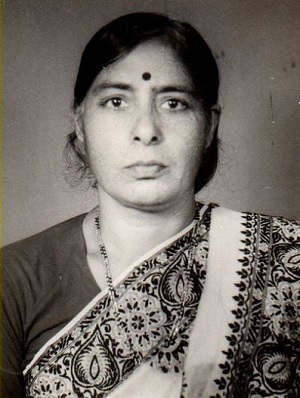Dec 26, 2025
Dec 26, 2025
This is a translation of the Original in Hindi written by Dr. Aruna Tyagi
 The history of India and Indian culture is as extensive as it is ancient. India is a nation of various castes, creeds, religions and dialects. India has succeeded in establishing unity among this diversity, and up to the boundless Himalayas, the string of Cultural and National Unity is all pervasive in India. Several castes have settled down here and the one element that they have invented within their religious devotion is – “Ekam Sabdipra Bahudha Badanti” – There is only one Brahm who is experienced and talked about in various forms by the people. This manna of Unity has been cascading in the hearts of all Indians. From the ancient times, India’s Unity, in its entirety, has been imagined and conceived in the form of the boundless Himalayas on the religious and cultural basis. The four abodes, the pilgrimage places and the rivers of the country – Ganga, Yamuna, Krishna, Kaveri and Narmada are the bonds of this Unity. The humans are naturally affected by this. To accept a restricted area of the entire Universe as one’s own is similar to viewing the vast Brahm in a limited and incarnate form.
The history of India and Indian culture is as extensive as it is ancient. India is a nation of various castes, creeds, religions and dialects. India has succeeded in establishing unity among this diversity, and up to the boundless Himalayas, the string of Cultural and National Unity is all pervasive in India. Several castes have settled down here and the one element that they have invented within their religious devotion is – “Ekam Sabdipra Bahudha Badanti” – There is only one Brahm who is experienced and talked about in various forms by the people. This manna of Unity has been cascading in the hearts of all Indians. From the ancient times, India’s Unity, in its entirety, has been imagined and conceived in the form of the boundless Himalayas on the religious and cultural basis. The four abodes, the pilgrimage places and the rivers of the country – Ganga, Yamuna, Krishna, Kaveri and Narmada are the bonds of this Unity. The humans are naturally affected by this. To accept a restricted area of the entire Universe as one’s own is similar to viewing the vast Brahm in a limited and incarnate form.
The wise men have also contrived certain important elements for National Unity in which, along with Geographic Unity, Ethnic Unity, Cultural Unity, Historical & Traditional Unity, Religious Unity, Economic & Political Aspirational Unity, the most important Unity is – The Unity of Language. In India, there are languages of Aryans, Dravidians and Nishads, but the basic Brahmi feeling of “Ekam Sabdipra Bahudha Badanti” has developed a deep and profound connection in all the languages with knowledge, devotion and generosity. From Kashmir to Kanyakumari, Panini’s ‘Ashtadhyayi’ and Patanjali’s ‘Mahabhashya’ have become the main source of the education of Grammar. Thus, in ancient India, Sanskrit Language and Brahmi Script were the main elements of Indian Unity. In the modern era, Hindi Language and Devanagri Script also rightfully deserve this importance and respect. Around thousand years ago, in Northern India, Sanskrit took the form of Magadhi and Shurseni Apbransh (form of Language), in which the Mandakini of faith and devotion was flown by Vidyapati, Sur, Tulsi, Kabir, Jayasi, Nanak, Dadu etc. That language of the devotees has taken the form of ‘Hindi’ in the modern era which was accepted as a medium of spiritual counsel and instruction by Swami Dayanand, and recognising its worth and vastness, Gandhiji had propagated ‘Hindi’ as the National Language.
With the development of Indian nationalism, several symbols have also developed. In these symbols, there is one National Language also along with the National Flag and the National Anthem. The ‘National Flag’ is the symbol of the nation’s Unity. The ‘National Anthem’ is the echo of the nation’s soul held together by a united voice; millions of hearts dance to its tune. Equivalent to these symbols, the National Language, too, is a genuine and real symbol of National Unity. If the hearts of the members of the nation cannot unite, then this unity is not possible unless there is unity in their voices. The Unity of language is the most dominant and the strongest means to achieve the Emotional Unity that is much discussed and talked about these days. The secret of the Emotional Unity of any developed nation is – a developed National Language. This language should be native, easy to comprehend, versatile, extensive and must be the representative of the culture of that country, only then the progress of the nation is possible. In terms of Economic Development also, one language is necessary for the appropriate exchange of ideas and thoughts in the whole nation.
Continued to Next Page
19-Dec-2020
More by : Dr. Giti Tyagi